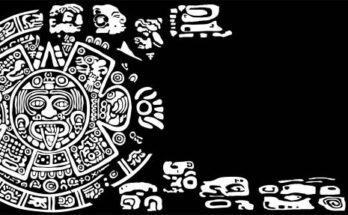In the quest for spiritual connection and inner peace, individuals across cultures and religions have turned to prayer and meditative techniques. Both practices share common ground in providing a means of communication with the divine, seeking solace, and cultivating a deeper understanding of oneself. This article delves into the nuances of prayer and meditative techniques, comparing their origins, methodologies, and effects on the mind, body, and spirit.
-
Origins and Philosophical Underpinnings
Prayer
 (Photo from iStock)
(Photo from iStock)
Prayer, deeply rooted in religious traditions, is a practice that spans across various cultures and belief systems. In Christianity, believers often engage in prayer as a means of communicating with God, seeking guidance, expressing gratitude, and seeking forgiveness. Similarly, in Islam, the daily practice of Salah involves ritualized prayers facing Mecca, fostering a direct connection with Allah.
-
Meditative Techniques
Meditation, on the other hand, has diverse origins, ranging from ancient Hindu and Buddhist traditions to secular mindfulness practices. The philosophical underpinnings of meditation often emphasize cultivating mindfulness, presence, and awareness. Techniques vary widely, from concentrative practices, such as focusing on the breath or a mantra, to mindfulness meditation that encourages observing thoughts without attachment.
-
Methodologies
Prayer
Prayer typically involves verbal communication with a higher power, whether through recited texts, spontaneous conversation, or structured rituals. The act of praying often includes specific postures, gestures, and rituals that vary across religious traditions. Some forms of prayer involve chanting, singing, or reciting sacred texts, creating a multisensory experience that engages the mind, body, and spirit.
-
Meditative Techniques
 (Photo from iStock)
(Photo from iStock)
Meditation, in contrast, may involve silent contemplation or the repetition of a specific focus, such as the breath or a mantra. The practitioner aims to achieve a state of heightened awareness and presence. While some meditation practices encourage stillness and tranquillity, others incorporate movement, as seen in practices like Tai Chi and Qigong. The emphasis in meditation is often on turning inward, quieting the mind, and observing thoughts without judgment.
-
Cognitive and Psychological Effects
Prayer
Research suggests that prayer can have positive effects on mental health, including reduced stress, increased feelings of gratitude, and enhanced emotional well-being. The act of surrendering one’s concerns to a higher power can provide a sense of comfort and purpose. Additionally, communal prayer fosters a sense of belonging and social support within religious communities.
-
Meditative Techniques
Meditation has been extensively studied for its impact on mental health and cognitive function. Regular meditation practice is associated with reduced anxiety, improved attention, and increased emotional regulation. Mindfulness meditation, in particular, has gained popularity in clinical settings for its effectiveness in treating conditions such as depression and post-traumatic stress disorder (PTSD).
-
Physiological Responses
 (Photo from iStock)
(Photo from iStock)
Prayer
Physiologically, prayer has been linked to changes in heart rate, blood pressure, and cortisol levels. Engaging in prayer rituals, especially those involving rhythmic movements or chants, may induce a calming effect on the nervous system. The communal aspect of prayer gatherings also contributes to a sense of shared energy and collective spiritual experience.
Meditative Techniques
Meditation, too, elicits physiological changes, such as reduced heart rate, decreased respiratory rate, and changes in brain wave patterns. Practices like mindfulness meditation have been shown to activate the parasympathetic nervous system, promoting a relaxation response. Mind-body practices like Yoga, which combine physical postures with meditative elements, offer a holistic approach to physical and mental well-being.
-
Spiritual Connection and Transcendence
Prayer
For many, prayer is a deeply spiritual experience that fosters a sense of connection with the divine. The act of surrendering to a higher power and seeking guidance can provide individuals with a profound sense of purpose and meaning in life. Prayer often serves as a vehicle for expressing gratitude, repentance, and devotion.
Meditative Techniques
Meditation, while often secular in its approach, can also be a spiritual practice for many individuals. Transcendental meditation, for instance, aims to elevate the practitioner to a state of pure awareness or transcendence. The emphasis on mindfulness and being present in the moment can evoke a sense of connection to something greater than oneself.
-
Common Ground and Interfaith Dialogue
 (Photo from iStock)
(Photo from iStock)
While prayer and meditative techniques arise from distinct cultural and religious contexts, there is a growing recognition of their shared elements. Both practices involve a form of contemplation, self-reflection, and the pursuit of inner peace. Interfaith dialogue often explores these commonalities, fostering mutual understanding and respect among people of different religious backgrounds.
-
Challenges and Criticisms
Prayer
Critics argue that prayer can sometimes be seen as a passive coping mechanism, potentially leading individuals to avoid taking practical steps to address their challenges. Moreover, the efficacy of prayer is a subject of theological and philosophical debate, with questions about divine intervention and the role of free will.
Meditative Techniques
 (Photo from iStock)
(Photo from iStock)
Some critics express concerns about the secularization of meditation, arguing that divorcing these practices from their cultural and religious roots may dilute their spiritual essence. Additionally, the commodification of mindfulness in popular culture has raised ethical questions about cultural appropriation and the commercialization of ancient traditions.
-
Conclusion
In the journey of self-discovery and spiritual exploration, individuals often find solace and meaning through prayer and meditative techniques. While rooted in different traditions, these practices share a common goal of connecting with the divine, fostering inner peace, and cultivating a deeper understanding of the self.
Recognizing the diverse ways in which prayer and meditation manifest across cultures. And belief systems allows for a more inclusive exploration of spiritual practices. Whether one seeks guidance through prayer or embraces the mindfulness of meditation, the overarching theme is a human quest for transcendence, connection, and a profound sense of purpose in the complex tapestry of existence.
Ultimately, the choice between prayer and meditative techniques may be deeply personal, reflecting the unique spiritual journey of each individual. In this exploration of prayer and meditation, we discover the universal human pursuit of transcendence, connection, and profound purpose.
Reference:
Declutter the Mind
Want to know about creation of the world, click on the link below:
How Can Religion Be Created? Exploring the Origins and Evolution




